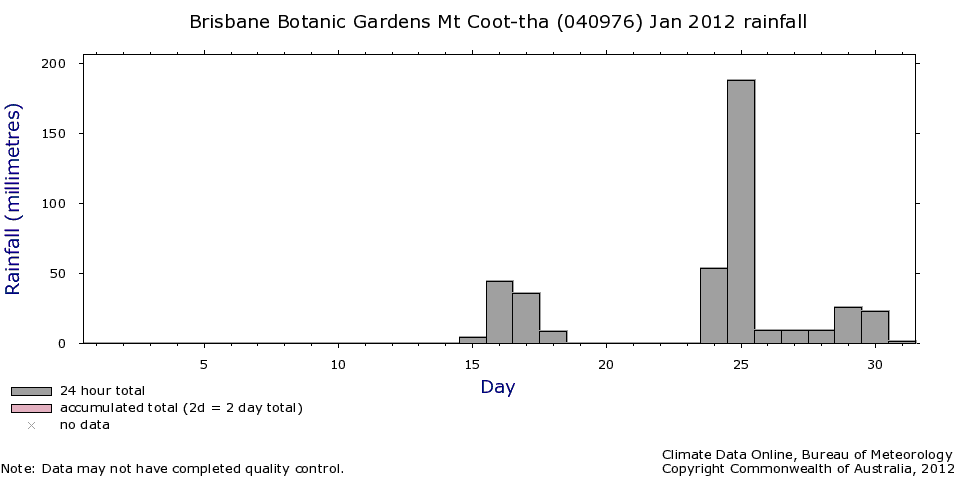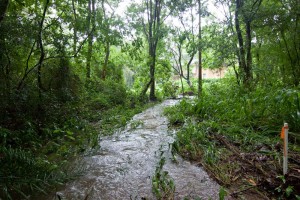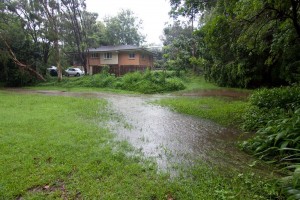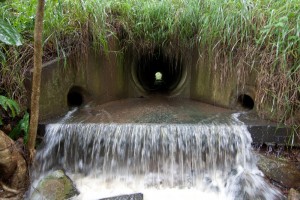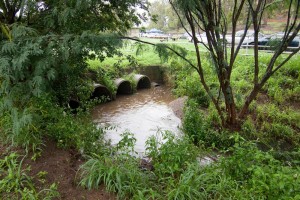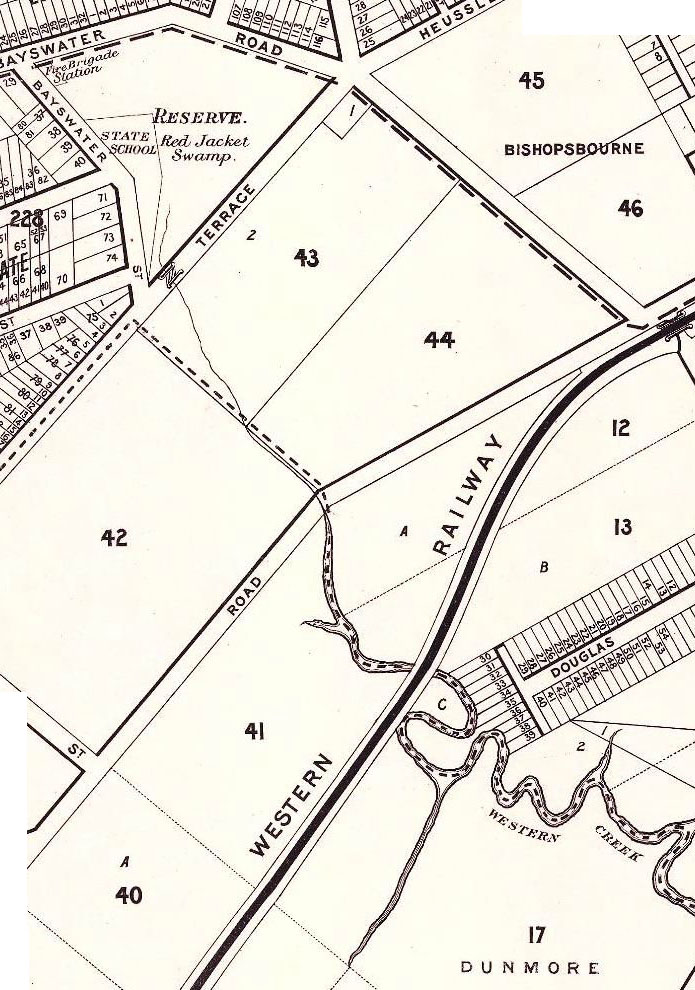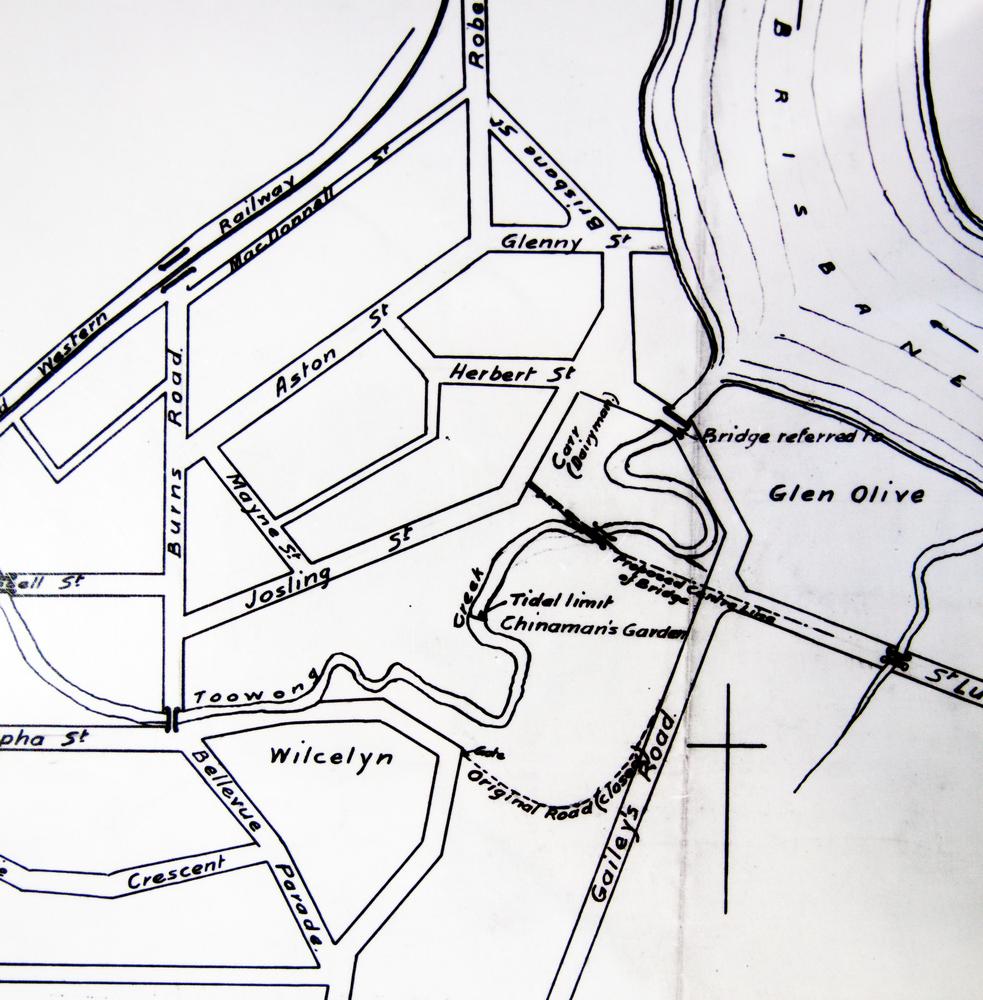La Nina has now officially left us, and already the Bureau is watching for signs of what next summer will bring. The summer of 2011-12 certainly was wet, but for the most part it was also rather gentle. Nearly all of the 700mm or so of rain that fell in Brisbane from the start of December 2011 to the end of February 2012 was delivered in doses of less than 50mm in a day. The one marked exception to this pattern occurred in the lead-up to Australia Day, with 187mm falling in the 24 hours before 9am, 26 January 2012.
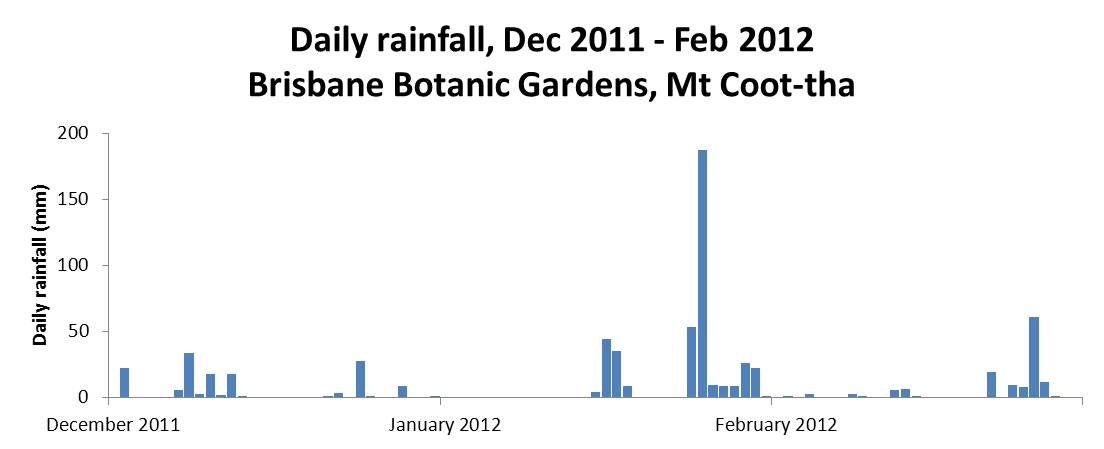
Daily rainfall at the Mt Coot-tha Botanic Gardens, December 2011 to February 2012. (Bureau of Meteorology, Climate Data Online)
Most of that rain fell on Wednesday 25 January, and I remember watching it from the comfort of my desk at 400 George Street. As I gazed out through the floor-to-ceiling windows, I also remember thinking about how the streams at the top of Western Creek must have been gushing; I was anxious to get up there and take some photos. Having observed how quickly that part of the catchment tends to drain, I wanted to get there as soon as possible after a good fall of rain. The opportunity finally came on the morning of Sunday the 29th. The rain had eased after a fall of about 25mm overnight, so I donned my camera and my raincoat and hot-footed it up to the Weedy Wonderland at the top of Western Creek.
Needless to say, the rain resumed as soon as I got to Couldrey Street. Nursing my Canon 50D under the front zip of my raincoat, and whipping it out as briefly as I could to take photos, I trundled up the stream and through the scrub, clambering to vantage points that I’m sure no sane person would, all in the name of documenting Western Creek in full flow. Well, almost full flow, as it was clear that the water had been been significantly higher in the hours before I got there.
The results are in this gallery page, and there is a sneak preview just below.
I hope it was all worth it, because despite my efforts to dry out my camera gear when I returned home (this included a very slow bake in the oven for a couple of hours), I recently discovered that one of my lenses has succumbed to a fungal infection. And believe it or not, this lens was a replacement for another lens that met a similar fate after I dropped it (and the camera — and myself!) into the floodwaters at Torwood Street in January 2011. Folks, water and SLR cameras are not a good mix.

